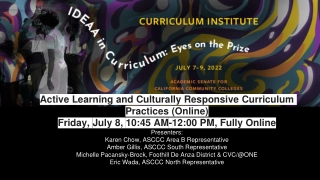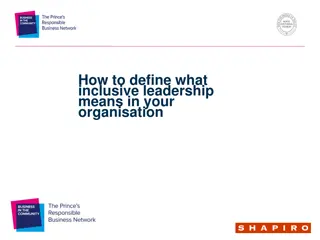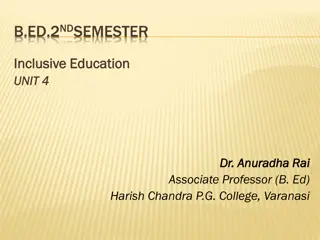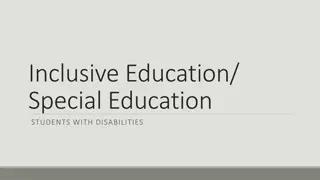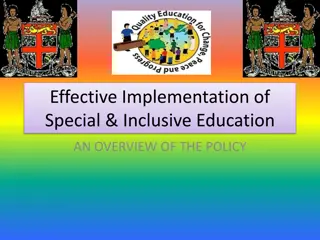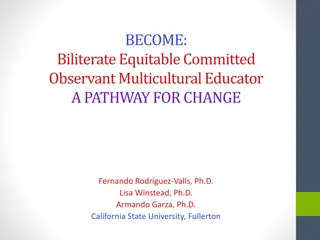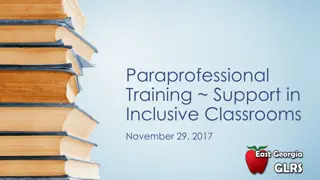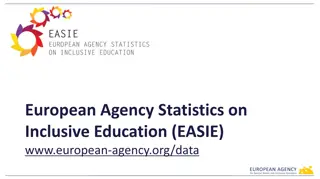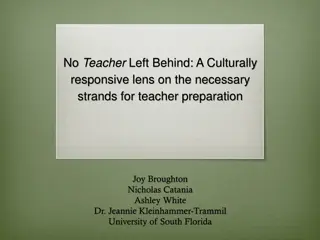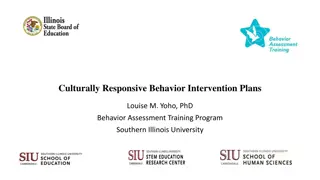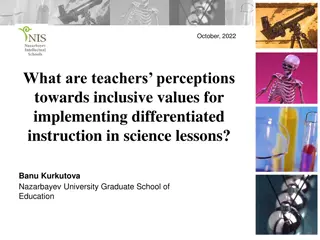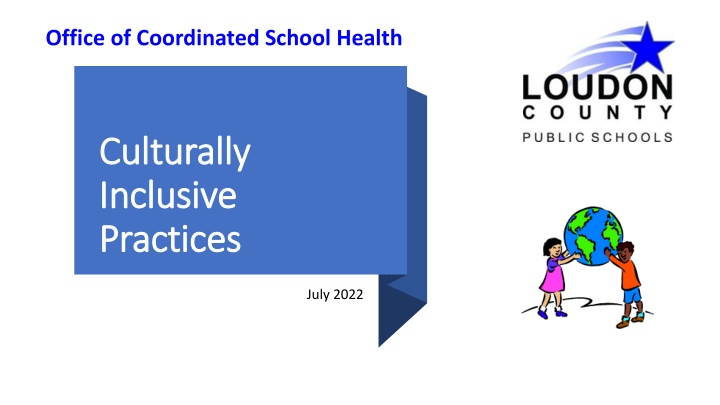
Culturally Inclusive Practices in Educational Environments
Discover key areas critical to fostering culturally inclusive practices in schools, including building culturally responsive environments, enhancing communication and language use, and implementing culturally relevant curriculum. Learn how to create an inclusive learning environment that values diversity and respects all student communities and cultures.
Uploaded on | 1 Views
Download Presentation

Please find below an Image/Link to download the presentation.
The content on the website is provided AS IS for your information and personal use only. It may not be sold, licensed, or shared on other websites without obtaining consent from the author. If you encounter any issues during the download, it is possible that the publisher has removed the file from their server.
You are allowed to download the files provided on this website for personal or commercial use, subject to the condition that they are used lawfully. All files are the property of their respective owners.
The content on the website is provided AS IS for your information and personal use only. It may not be sold, licensed, or shared on other websites without obtaining consent from the author.
E N D
Presentation Transcript
Office of Coordinated School Health Culturally Culturally Inclusive Inclusive Practices Practices July 2022
Key areas are critical to the development of culturally inclusive practices. https://www.tn.gov/education/student-support/special-education/culturally-inclusive-practices.html
Culturally inclusive environments, commonly referred to as culturally responsive environments, schools consciously build a place in which heritage and experiences of all student communities and cultures are treated equitably and with respect. Environment Culturally responsive environments foster appreciation for all, including student families. There are a wide range of classroom practices and activities that can help students learn about different cultures as well as help foster an appreciation for diversity.
Communication and use of Language Activities focused on developing safe and welcoming environments Nonverbal communication Classroom Support Relationship Building Discipline Identify and Map Your Cultural Reference Points
Culturally responsive teaching is the foundation for establishing an inclusive learning environment for all students and responds to the diversity of students within instructional activities. Instruction Culturally responsive educators must be proficient in relating to their students.
Resources: How to Get the Most Out of a Diverse Classroom Library How do I learn more about planning culturally responsive instruction? Talk Less So Students Learn More 3 Ways to Use Music in the Classroom Using Culturally Responsive Lessons to Boost Engagement Culturally Relevant Curriculum and Culturally Responsive Schools Toolkit
Culturally responsive curriculum A balanced curriculum adhering to the Tennessee Academic Standards should empower students to value all cultures, not just their own. The components of a culturally responsive curriculum should: Acknowledge the legitimacy of the cultural heritages of different ethnic groups Curriculum Connect school and home experiences Use different instructional strategies to address all learning styles Teach students to value their own cultural heritage and that of others Incorporate multicultural materials into the curriculum
Information taken from the TN Dept of Education Special Education Page https://www.tn.gov/education/student- support/special-education/culturally- inclusive-practices.html


